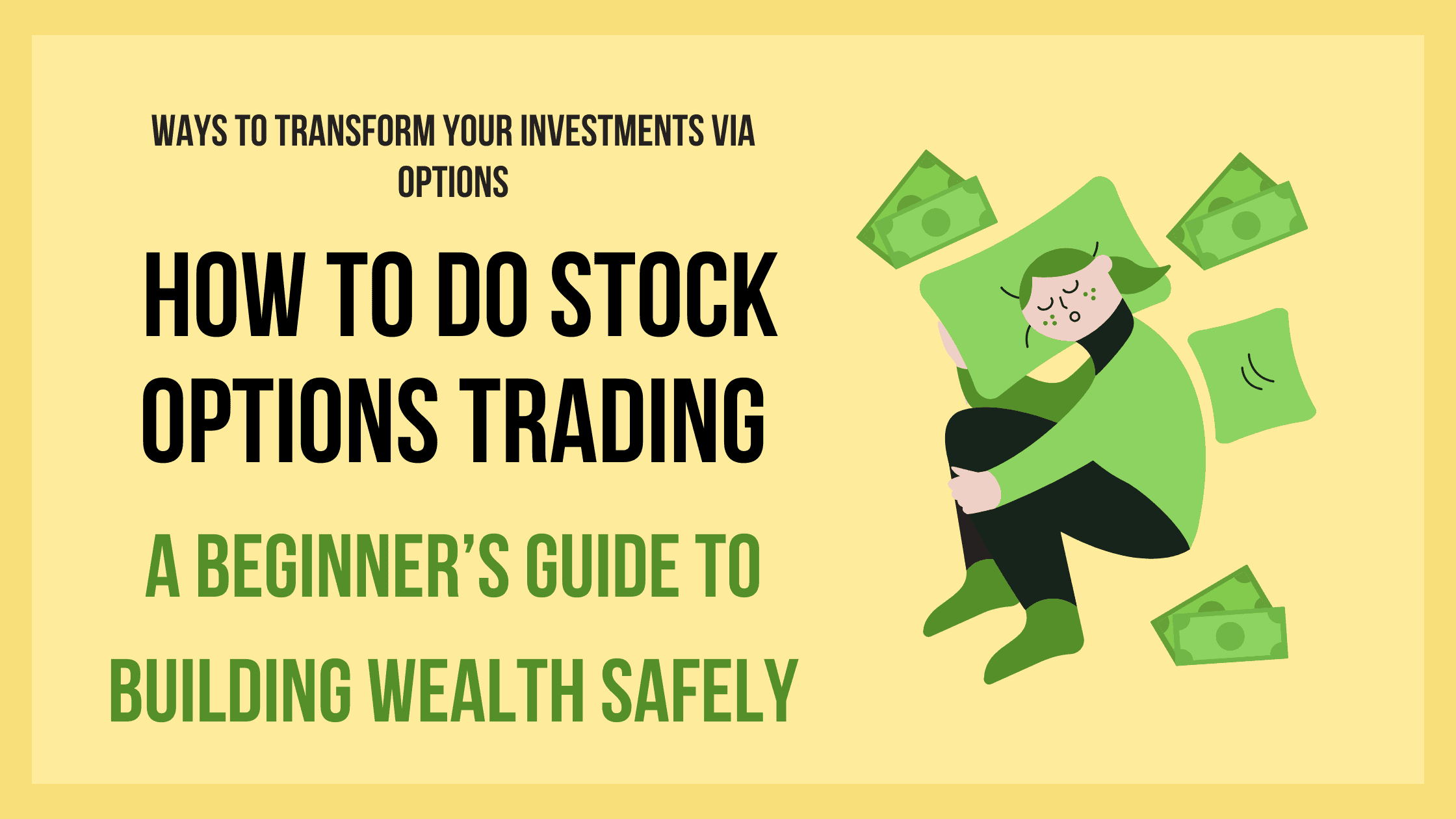Table of Contents
If you’re interested in stock options trading, you’ve probably heard stories of traders making massive returns overnight. But here’s the truth: successful options trading isn’t about gambling—it’s about strategy, discipline, and understanding the fundamentals.
Instead of treating options like a lottery ticket, you should master how options work, how they’re priced, and how to manage risks effectively.
In this guide, we’ll break down stock options trading, how to calculate your potential profits and losses, and why a strong foundation in options investing can help you build long-term wealth.
What Is Stock Options Trading?
At its core, stock options trading allows you to control 100 shares of a stock with a relatively small investment. Instead of buying shares outright, you can use options to:
✔ Profit from price movements without needing to own the stock.
✔ Leverage your trades for higher potential returns.
✔ Hedge against losses in your existing stock portfolio.
There are two main types of options:
- Call Options – This gives you the right (but not the obligation) to buy a stock at a set price before expiration.
- Put Options – This gives you the right (but not the obligation) to sell a stock at a set price before expiration.
Example: Buying a Call Option
Let’s say you buy a call option for a stock trading at $5 per share with a strike price of $5 and pay a $1 premium for the contract.
Your breakeven price = Strike price + Premium = $6
If the stock price rises to $10, your profit is calculated as:
Profit per share = $10 – $6 = $4
Since one contract controls 100 shares, $4 × 100 = $400 profit
Percentage return: 400%
But if the stock never reaches $6, you could lose the entire $100 premium you paid. This is why timing and price direction are crucial in stock options trading.
Want to master options pricing and risk management? Check out my Courses and Bundles. I’ll help you understand real-world scenarios & enable you to make smarter investing/trading decisions.
Stock Options Trading vs. Options Investing: Which Is Better?
Many beginners make the mistake of diving into stock options trading without first understanding the principles of options investing. But here’s why that’s a dangerous move:
#1 The Risk of Getting Both Direction and Timing Wrong
With options, it’s not enough to predict whether a stock will go up or down. You must also predict how fast it will move. Even if you get the direction right, your option could lose value due to time decay (when options lose value as expiration approaches).
#2 The Power of Selling Options
Instead of just buying options, smart investors sell covered calls and cash-secured puts to collect income while managing risk.
- Selling Covered Calls – If you own 100 shares of a stock, you can sell a call option and collect a premium upfront. If the stock doesn’t exceed the strike price, you keep both the premium and your shares.
- Selling Cash-Secured Puts – You agree to buy a stock at a lower price and get paid a premium for taking on that obligation. If the stock never drops to that price, you keep the premium as profit.
Many traders focus only on buying options when selling options can be a more reliable way to generate consistent income.
Not sure where to start? Take my free options investing course to understand why investing with options is a safer way to build wealth before jumping into full-scale trading.
| Bonus Information – Explore the Trends in options trading |
How to Calculate Profits and Break-Even in Stock Options Trading
One of the biggest mistakes new traders make is not calculating their break-even price before placing a trade. Here’s how you can do it:
For Call Options
- Breakeven = Strike Price + Premium Paid
- Profit = (Stock Price at Expiration – Breakeven Price) × 100
For Put Options
- Breakeven = Strike Price – Premium Paid
- Profit = (Breakeven Price – Stock Price at Expiration) × 100
Example: Buying an Out-of-the-Money Call Option
- You buy a call option with a strike price of $100 for a $3 premium.
- The stock is currently trading at $97 (below the strike price).
- If the stock reaches $101 by expiration, the option is “in the money,” but due to time decay, you may not profit.
- If the stock doesn’t reach $103 (breakeven), you lose money.
Key takeaway: Many traders assume any stock price increase guarantees profits, but time decay and volatility play a major role in determining an option’s final value.
Want to avoid rookie mistakes? Learn step-by-step with my Fundamentals Bundle course for beginners to build your option trading skills correctly.
Final Thoughts: The Right Path to Stock Options Trading Success
Stock options trading offers massive opportunities, but only if you understand how options work before risking your capital. Most traders lose money because they:
X Fail to calculate their breakeven prices.
X Ignore the effects of time decay and volatility.
X Focus only on buying options instead of selling covered calls and cash-secured puts.
The key to long-term success is learning the fundamentals first. Investing with options can be a powerful way to build wealth safely, while trading can generate higher returns if done strategically.
Ready to start your journey?
✔ New to options? Try out my free options investing course and learn the basics risk-free.
✔ Want to trade options profitably? Enroll in my Options Trading Course for Beginners: The Fundamentals Bundle and gain a structured approach to options trading success.
Sign up today and take the first step toward mastering stock options trading

